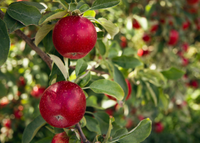Learn how you can use the method of permaculture in your own garden
Permaculture or “permanent agriculture” is an Indigenous growing method that recognizes the benefit of growing food in harmony with nature, rather than against it. This mutually beneficial growing mindset creates communities that can adapt to climate change while improving the health of the land and its people.
Though we’ve seen large-scale gardeners apply permaculture methods to their farming spaces, our own garden spaces can be designed mimic the natural world in the same way. The goal here is to grow food in a way that supports the local ecosystem and is an easier, more efficient, more collaborative way to produce food at home.
The ethics of permaculture
Applying permaculture techniques to your growing space is more of a mindset shift that encourages you to do more with less. The three ethics of permaculture involve: caring for the earth, caring for the people that live on the earth, and making sure there is a fair share between them. These ethics are based on the idea that the land belongs to us all, and we must remember preservation when transforming our local systems.
The principles of permaculture
- Observe and engage with nature to see what already works. What plant species want to grow there? Observe what wildlife you already have, or if you have high floods in the springtime. These observations help you to decide how to move forward efficiently with your space.
- Use and save abundant resources. If you know you have a wet spring, capture the rainwater through permaculture designs to use when water is scarce in summer months. If you produce a lot of food scraps, turn them into compost for your bed. If you have a highly productive plant, save your best seeds. Overall, avoid wasting things that are a luxury in and for the natural world.
- Less effort for the greatest effect. Don’t work against your space. If you have some empty space around your driveway, plant some fruit trees. You don’t need to clear out huge plots to install a food forest; you can work with containers, balconies and most urban spaces.
- Use relationships that naturally occur. Work with beneficial insects to fight off pests, or practice companion planting for the best crop yields. This ensures that you can avoid pesticides or other non-permaculture techniques.
- Mimic nature. Use diversity in your systems, methods and plants, just as nature would, and use patterns that you see in nature to design your permaculture systems.
- Accept and apply feedback. Learn from your mistakes and adjust your systems accordingly: amend your soil or adjust the position of your garden. You may need to think outside the box (or to nature) to find your solutions. Don’t be afraid to seek help, and then respond creatively and proactively.
 Photo by Jen Theodore on UnsplashNext steps for your permaculture garden space
Photo by Jen Theodore on UnsplashNext steps for your permaculture garden space
Start small and slow. Ask yourself what matters to you the most and start from there. It could be to start making and creating your own compost, reducing your gardening waste, or just planting a fruit tree. This is a great start. Don’t get overwhelmed by flipping your entire space into a food forest and permaculture space right away. That’s not permaculture.
“Nature does not hurry, yet everything is accomplished.” —Lao Tzu
Remember, the ultimate goal is to be self-sustaining and to grow our own food while also doing less harm to the natural environment around us. Permaculture techniques are fantastic to implement if you want to do good for the planet while nourishing yourself in the meantime.
If you want to learn more about permaculture, there are courses all around the world. Remember to pick a course based on your climate—that said, while learning about permaculture outside of your climate/growing zone may not be relevant to your space, it could still be beneficial information.

